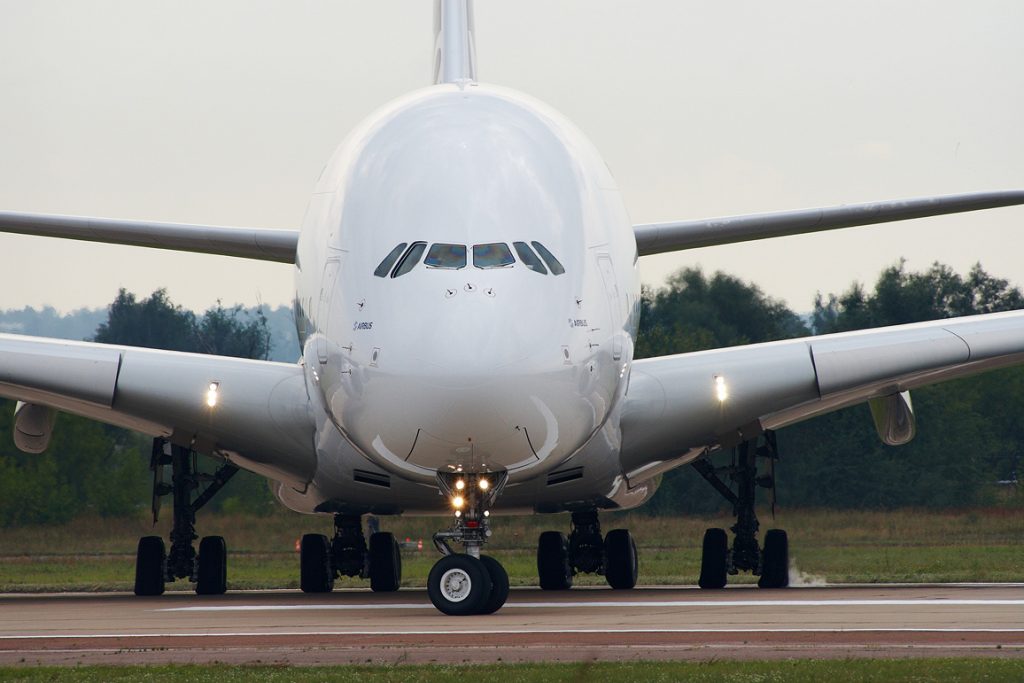
Note: This blog was originally written on July 15/16, 2016, but never published. To see the other four blogs in my international aviation trip, see https://doctoraviation.com/international-travel-abu-dhabi/
Doctor Aviation is returning from Thailand via Abu Dhabi and enroute to JFK International Airport in New York City. As I approached the aircraft in the wee hours of the morning – we boarded at 4:20am, from the jet way I could see the enormous double decker Airbus 380-800 (A380). In contrast to the original Boeing 747 the second deck of the A380 runs the entire fuselage of the aircraft. You can think of the second deck as a spine.
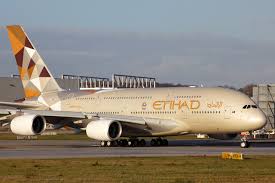
As I neared the door to enter the beast of an aircraft, I peered down at one of the four turbofan engines. The largest I had ever seen. It seemed that the intake could allow two of me to stand head to head (and I am 6’ 5”). What kind of thrust must they produce, I thought.
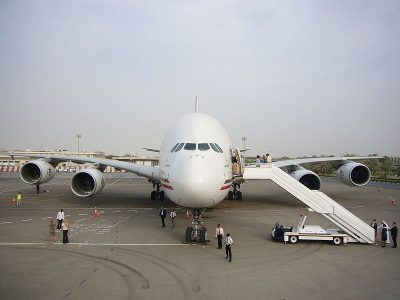
I was fortunate that one of the exit row seats was empty so the flight attendant was kind enough to allow me to move into it from my cramped quarters in the back of the coach section in which I was assigned. Since we would be flying for 13 and a half hours I was thankful that my legs would not remain coiled for over half a day.
Prior to takeoff, I ran into one of the pilots. We struck up a conversation in the galley. When he learned that I had flown the Mighty KC-135 his interest was piqued. We discussed airplanes, talked about his previous job at Northwest Airlines and how his job had been lost when Northwest merged with Delta. He had gone to Qatar Airways and then to Etihad. He encouraged me to visit the upper deck of the aircraft, where first class section was located, after the flight.
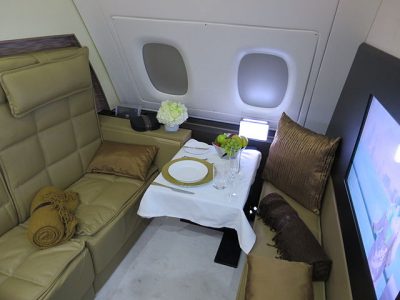
As the 13.5 hour flight came to a close, I was speaking with a frequent flyer, Kevin who was sitting in my row. He told me that I would be stunned to see the suite at the front of the top deck. It was three rooms, with a private toilet, sitting room and bed. It is rumored to cost $30,000 for the accommodation. I could not wait to see it. Unfortunately, as I waited for all to deplane so I could go upstairs, I was informed that security was onboard and therefore I could not go up. Dejected for a moment, I soon had a better offer.
Another of the four pilots approached me and we began chatting. He invited me up to see the flight deck and when he too learned that I had flown the 135, the conversation was on (that Mighty KC-135 holds magic, not just for me). The next thing I know the pilot, first officer and I were engaged in “pilot speak” – discussing everything from sticks, throttles, fuel tanks, hydraulics, hands on flying versus computer programming, approaches…the gamut. It had been a while since I had been able to have a chat like this and I was loving it.
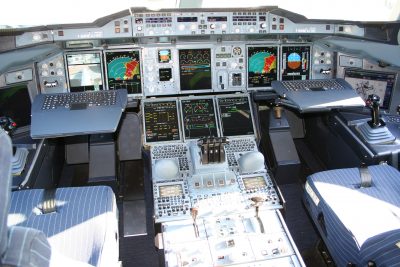
I learned that the 380 has only two main hydraulic systems (three are the norm on airliners) but the 380 incorporates mini backup systems for each of the major components of the airplane (e.g. flight controls, gear). This pilot brought up Sioux City accident (which we study in Doctor Aviation) and explained how such a disaster would be averted in the 380 with the multiple backup systems. We then went into the number of fuel tanks. Interesting fact, there are two tanks located in the massive horizontal stabilizer in the empennage area. By adjusting the fuel in these two tanks they can make slight adjustments to the aircraft’s cg (center of gravity) allowing it to fly up to 2.5% more efficiently. That may not sound like much, but in a 13.5 hour flight, 2.5% can save a lot of fuel (and next to personnel, fuel is the major cost of airline operations). I asked about the amount of thrust that an engine could produce, my jaw dropped to hear the answer, 80,000 lbs per engine. They quickly added that the max takeoff weigh was over 1,200,000 lbs — hence the need for such great thrust.
The session ended with me in the left seat. Hand on the joy stick located to the left of the pilot’s seat. The stick moves, though that is only to add realism for the pilot – the aircraft is completely fly by wire as we study in Doctor Aviation. The pilot insisted on putting the arm rest down for added comfort for me and adjusting the seat.
Ironically, as I sat admiring this modern piece of equipment, the two pilots indicated that they would love to fly the Mighty KC-135 – because you actually get to fly that airplane with raw muscle, not just flip switches. The visit and the comment left me glowing as I walked out of the “Kinda Mighty” A 380
